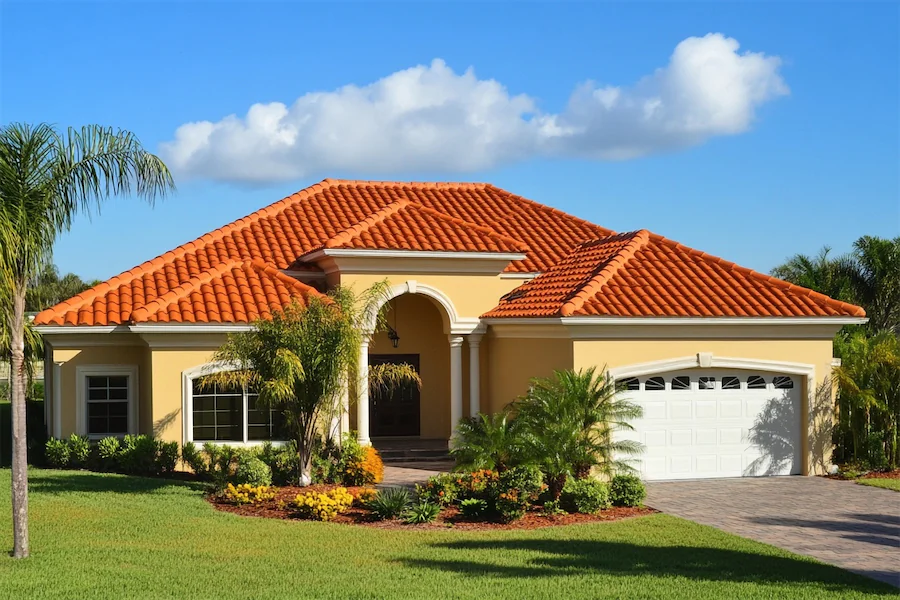A tile roof is a roofing system where individual tiles, made from materials such as clay, concrete, slate, or synthetic composites, are installed in an overlapping pattern to create a durable and weather-resistant barrier. Tile roofs are renowned for their longevity, aesthetic appeal, and ability to withstand various environmental conditions.
History and Origins of Tile Roofs
The use of roof tiles dates back thousands of years, with early examples found in ancient China around 10,000 B.C. during the Neolithic Age. This practice spread to Middle Eastern and European architecture, becoming a staple in regions like ancient Egypt, Babylon, Greece, and Rome. The enduring popularity of tile roofing is attributed to its durability and the natural materials available in these areas.
Key Features of Tile Roofs
- Durability and Longevity: Tile roofs are known for their exceptional lifespan, often lasting 50 to 100 years or more when properly maintained. Materials like clay and slate are particularly durable, with some slate roofs lasting over a century.
- Aesthetic Versatility: Available in various shapes, sizes, and colors, tile roofs can complement a wide range of architectural styles. From the classic curved Spanish tiles to flat modern designs, homeowners can choose options that enhance their home’s curb appeal.
- Energy Efficiency: Tile roofs provide natural thermal resistance, helping to regulate indoor temperatures. The airspace created by overlapping tiles also serves as an insulator, reducing heat transfer and potentially lowering energy costs.
- Fire and Weather Resistance: Many tile materials, such as clay and concrete, are non-combustible, offering excellent fire resistance. Additionally, tile roofs can withstand harsh weather conditions, including high winds and hail.
Applications of Tile Roofs
Tile roofs are suitable for various building types, including residential homes, commercial structures, and historical restorations. Their adaptability to different architectural styles and climates makes them a popular choice in regions prone to hot weather or exposure to salt air. The longevity and low maintenance requirements of tile roofs also make them a cost-effective option over time.
Considerations When Choosing Tile Roofs
- Weight: Tile roofing materials can be heavy, often requiring additional structural support. It’s essential to assess whether the existing building framework can accommodate the weight or if reinforcements are necessary.
- Cost: The initial installation cost of tile roofs is higher compared to materials like asphalt shingles. However, considering their durability and minimal maintenance needs, tile roofs can offer long-term savings.
- Installation Complexity: Proper installation of tile roofs requires skilled professionals experienced with the specific materials and techniques. Improper installation can lead to issues such as leaks or reduced lifespan.
- Fragility: While durable, individual tiles can be brittle and may crack under heavy impact or improper handling. Care should be taken during installation and maintenance to avoid damage.
Conclusion
Tile roofs offer a blend of durability, aesthetic appeal, and energy efficiency, making them a valuable roofing option for various structures. While the initial investment and structural considerations are significant, the long-term benefits, including longevity and low maintenance, make tile roofing a practical and attractive choice for homeowners and builders alike.
